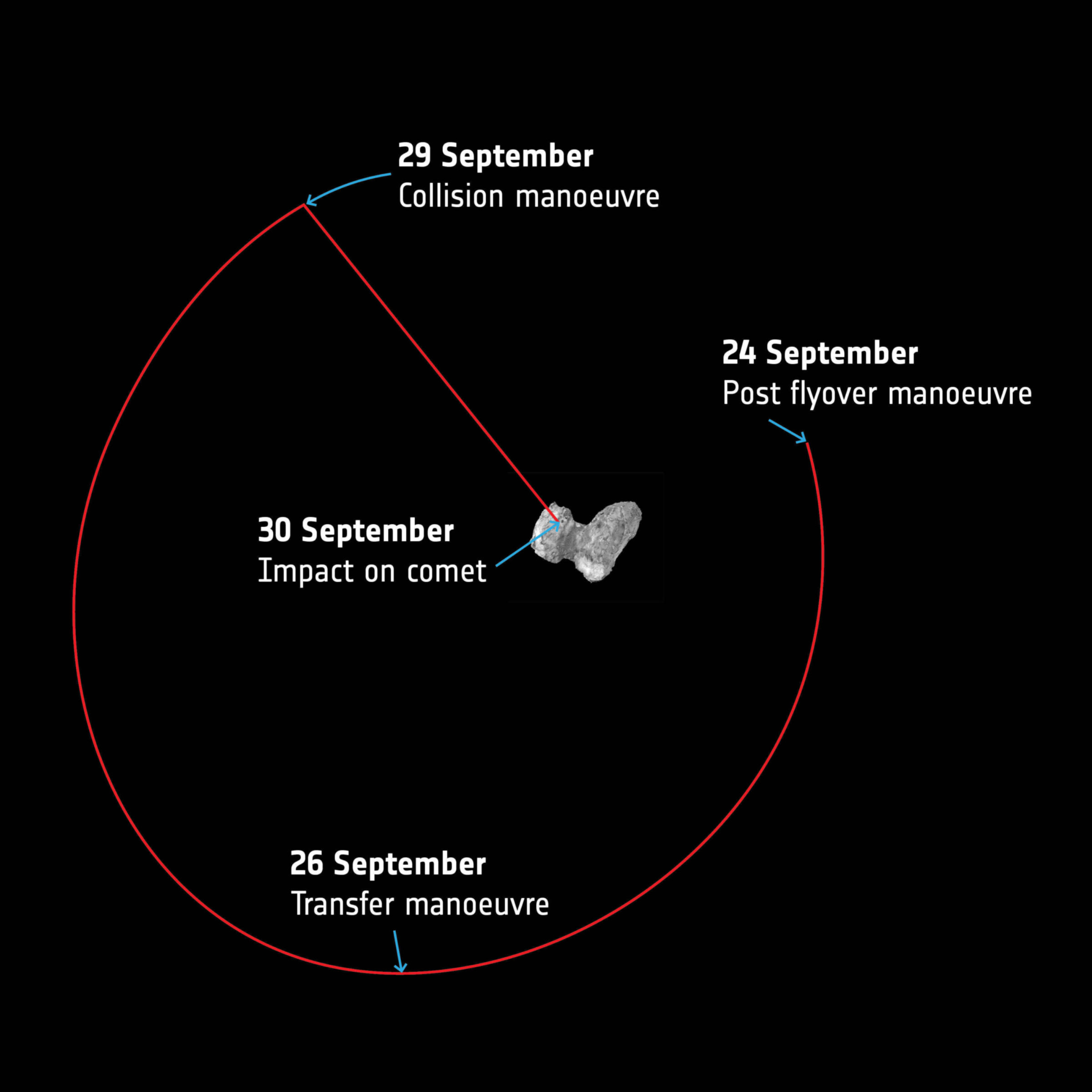Emily Lakdawalla • Sep 09, 2016
Rosetta end-of-mission update
The European Space Agency posted several articles this morning about the plans for the end of the Rosetta mission scheduled for September 30, just three weeks from now. On September 29, a rocket burn will essentially cancel out Rosetta's orbital motion around the comet, initiating a free fall from an altitude of 20 kilometers. The spacecraft will impact the comet at a speed of about 90 centimeters per second at 04:20 PDT / 07:20 EDT / 11:20 UTC / 13:20 CEST, give or take 20 minutes. Upon impact, the spacecraft will automatically "passivate," cutting the radio connection to Earth and ending the mission forever. (Why does the mission have to end? Read ESA's FAQ.)

They have targeted a landing site in the Ma'at region on the "head" of the comet, in a flat area adjacent to a pit from which Rosetta has seen cometary activity. During the descent, they hope to observe at very high resolution the "goosebump" structures in the wall of the pit that they think may be a record of how the comet formed by accretion of smaller cometesimals. The team has named the pit Deir el-Medina for its resemblance to the Egyptian archeological site. Deir el-Medina is the site labeled "Ma'at_02" in the image below. Simulations of the landing suggest they should be able to touch down in that flat area between the sites marked "Ma'at_02" and "Ma'at_03" (within a region 500 by 700 meters in size).

Here is a view of one of the Ma'at pits (I believe this is not Deir el-Medina, but rather the one named "Ma'at_01") showing the "goosebump" structures, which were also referred to as "dinosaur eggs" earlier in the mission. Here is a view of another comet pit in the Seth region, showing the "goosebump" structures, which were also referred to as "dinosaur eggs" earlier in the mission. (Thanks to commenter JB Vincent for pointing out that this was not a Ma'at pit.)

Where exactly is this on the comet? I find it really difficult to orient myself on the double-lobed and craggy-shaped Churuymov-Gerasimenko, but the two deep Ma'at pits are actually relatively straightforward to find. First, look for an image of the comet in which it looks like a small animal (perhaps a capybara). The Ma'at pits are the dots on the left upper lip, maybe where whiskers would be rooted. (Or perhaps our space rodent has reptilian heat-sensing pits on its schnozz.)
Not sure what kind of monster Churyumov-Gerasimenko is, but it's kind of cute. Bulldoggy-gopherish thing. pic.twitter.com/iMQDjTjoFO
— Emily Lakdawalla (@elakdawalla) August 15, 2014
If you consider the comet to be "upright" when looked at this way, the "three pits" image at the top of this post is "upside down." Thus oriented, I went through some of the Rosetta data archives and found a few views of the pits under different lighting conditions. Here's one that orients you to the comet and allows a peek at the floors of the pits.

In this view, the pit floors are shadowed, but the low lighting picks out interesting texture in the "flat" region in which Rosetta plans to land.

Finally, here's an oblique perspective, providing a better view of the textures on the walls of the pits.

I'm sure there are much better views in the archives. I pulled these from my own Rosetta image data pages, but the Rosetta mission has released much more data since I made those. If you find other great views of the landing site, please post them in the comments!
Support our core enterprises
Your support powers our mission to explore worlds, find life, and defend Earth. You make all the difference when you make a gift. Give today!
Donate

 Explore Worlds
Explore Worlds Find Life
Find Life Defend Earth
Defend Earth

